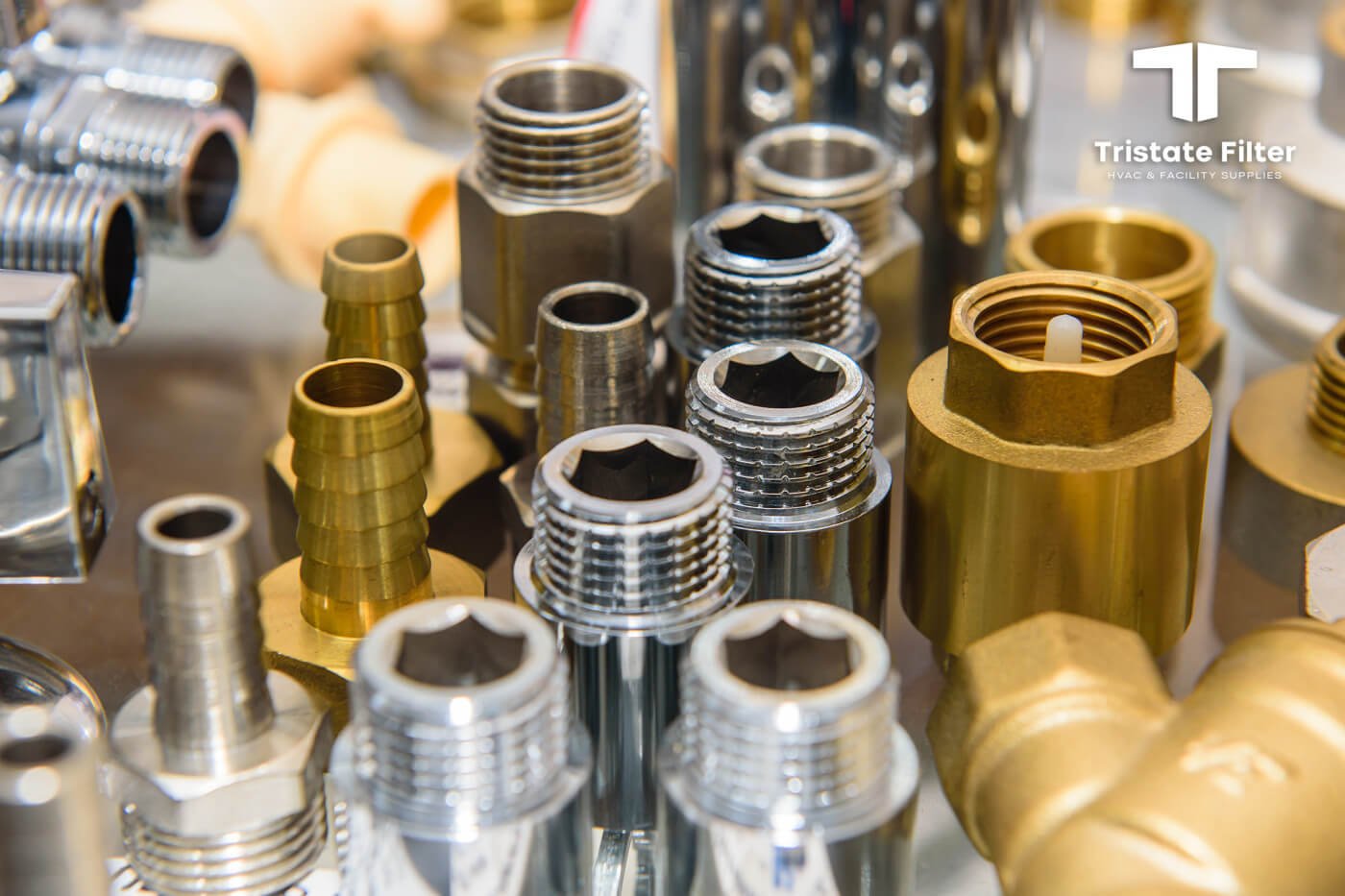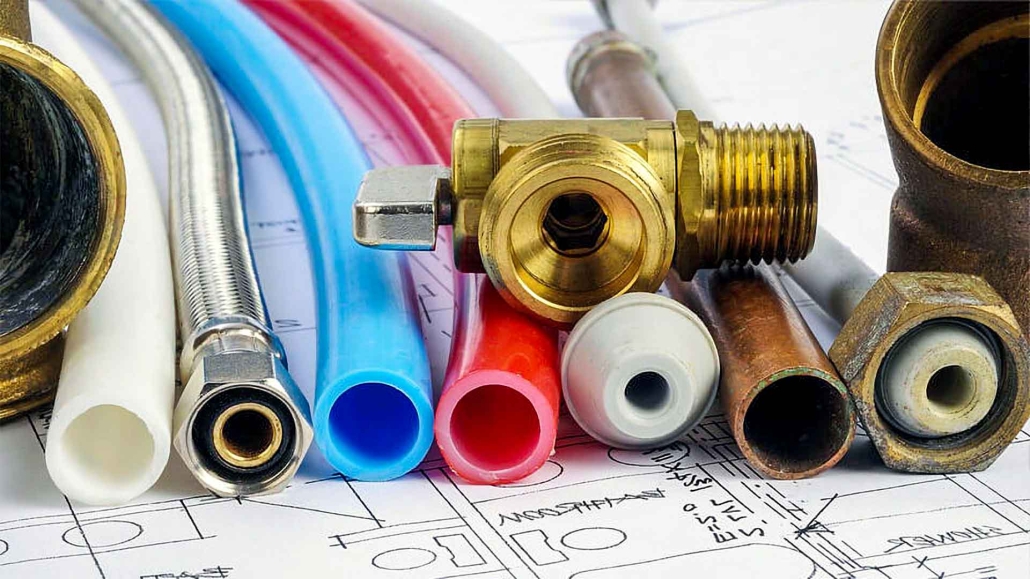**Pros of plumbing and pipe fitting include reliable water supply and efficient waste management. Cons include potential leaks and high maintenance costs.
** Plumbing and pipe fitting play crucial roles in modern infrastructure. They ensure clean water supply and proper waste disposal, contributing to hygiene and convenience. Skilled plumbers and pipe fitters are essential for maintaining these systems, ensuring they function efficiently. Despite the benefits, there are challenges.
Leaks can cause significant damage and require costly repairs. Regular maintenance is necessary to prevent issues, which can be expensive over time. Understanding these pros and cons helps homeowners and businesses make informed decisions about their plumbing needs. Proper installation and maintenance are vital for long-term system reliability.

Introduction To Plumbing And Pipe Fitting
Plumbing and pipe fitting are crucial for every building. They ensure water flows safely and efficiently. Both have a long history and are vital in modern infrastructure. Understanding their pros and cons helps in making informed decisions.
Brief History
Plumbing dates back to ancient civilizations. Romans built aqueducts to supply water. In ancient Greece, pipes were made of clay. Over time, materials evolved from lead to copper and PVC.
Pipe fitting started with simple connections. Early systems used basic joints and fittings. Today, we have advanced methods and materials.
Importance In Modern Infrastructure
Plumbing is essential for clean water and sanitation. Without it, homes and cities would face health issues. Proper pipe fitting prevents leaks and water damage.
Modern buildings rely on complex plumbing systems. These systems include water supply, waste removal, and heating. Skilled plumbers and pipe fitters ensure these systems work efficiently.
| Pros | Cons |
|---|---|
| Reliable water supply | Installation can be costly |
| Efficient waste removal | Requires regular maintenance |
| Improved sanitation | Potential for leaks and damage |
| Energy-efficient systems | Complex systems need skilled labor |
Materials Used In Plumbing
Plumbing systems rely on various materials to transport water. Choosing the right material is crucial. It affects the system’s durability, cost, and efficiency. Below, we explore common types of pipes and their pros and cons.
Common Types Of Pipes
Several materials are commonly used in plumbing. Here are the most popular ones:
- Copper
- PEX (cross-linked polyethylene)
- PVC (polyvinyl chloride)
- Galvanized Steel
- CPVC (chlorinated polyvinyl chloride)
Pros And Cons Of Each Material
| Material | Pros | Cons |
|---|---|---|
| Copper |
|
|
| PEX |
|
|
| PVC |
|
|
| Galvanized Steel |
|
|
| CPVC |
|
|
Plumbing Techniques
Plumbing techniques are essential for effective and efficient pipe fitting. Different methods offer unique advantages and challenges. It’s crucial to understand these techniques to ensure proper plumbing installations.
Soldering And Welding
Soldering involves joining pipes using a filler metal. This technique creates a strong bond. It is commonly used for copper pipes. It requires heating the pipes and the filler metal until they melt. The melted filler metal flows into the joint, forming a secure connection.
Welding is similar but uses higher temperatures. It is ideal for steel and other metals. Welding can handle higher pressures and temperatures. This makes it suitable for industrial applications. Both methods require skill and proper safety precautions.
Threaded Pipe Connections
Threaded pipe connections use screw threads to join pipes. This technique is straightforward and does not require heat. It is ideal for easy assembly and disassembly. This is useful for maintenance and repairs. Threaded connections are common in galvanized steel pipes and certain plastic pipes.
Each technique has its pros and cons. Soldering is reliable but requires precise heating. Welding is strong but more complex. Threaded connections are simple but may leak if not sealed properly.
| Technique | Pros | Cons |
|---|---|---|
| Soldering |
|
|
| Welding |
|
|
| Threaded Connections |
|
|
Pipe Fitting Basics
Understanding pipe fitting basics is essential for any plumbing project. This knowledge helps in effective water and gas transportation. It also ensures a safe and efficient system. Here, we will cover the necessary tools and common fitting types.
Tools Needed
Having the right tools makes pipe fitting easier. Below is a list of essential tools:
- Pipe Cutter: Cuts pipes to the required length.
- Pipe Wrench: Holds and turns pipes.
- Thread Seal Tape: Seals pipe threads to prevent leaks.
- Pipe Bender: Bends pipes without breaking them.
- Measuring Tape: Measures the pipe length accurately.
Common Fitting Types
Various fitting types connect pipes in different ways. Here are some common ones:
| Fitting Type | Description |
|---|---|
| Elbow | Changes the direction of the pipe. |
| Tee | Divides or combines pipe flow. |
| Coupling | Connects two pipes together. |
| Union | Allows easy disconnection of pipes. |
| Adaptor | Connects pipes of different types. |
Knowing these basics helps in efficient and effective pipe fitting. It also ensures safety and durability of your plumbing system.
Advantages Of Professional Plumbing
Hiring a professional plumber offers many benefits. Let’s explore the key advantages.
Quality Assurance
Professional plumbers provide top-notch service. They use high-quality materials and tools.
They have the skills to fix complex issues. You get a long-lasting solution, not a temporary fix.
Time Efficiency
Professionals complete plumbing tasks quickly. They know the best methods to use.
Save time and avoid stress by hiring an expert. They finish the job faster than doing it yourself.
| Benefit | Description |
|---|---|
| Quality Assurance | High-quality materials and skilled work. |
| Time Efficiency | Quick and effective solutions. |
- Save time with professional help.
- Get reliable and durable solutions.
- Avoid the stress of DIY plumbing.
Diy Plumbing: Pros And Cons
Many homeowners consider DIY plumbing to save money. Fixing minor issues yourself can be satisfying. But there are both benefits and drawbacks to this approach.
Cost Savings
One of the biggest advantages of DIY plumbing is cost savings. Professional plumbers can be expensive. By doing the work yourself, you save on labor costs.
- Minimal costs for tools and materials
- No labor fees
- Potential to learn and save on future repairs
These savings can be significant. If you are on a budget, DIY might be appealing.
Potential Risks
DIY plumbing comes with potential risks. Mistakes can lead to bigger problems. You might face water damage or leaks.
- Incorrect installations can cause leaks
- Water damage can be costly to repair
- Improper repairs may void home warranties
These risks can outweigh the savings. If unsure, hiring a professional might be better.
Additionally, some plumbing tasks require permits. Without proper permits, you could face fines.
Common Plumbing Issues
Plumbing problems are frequent in many homes. They can cause trouble and damage. Knowing common plumbing issues helps you fix them quickly. Below, we discuss some of the most common problems you might face.
Leaks And Drips
Leaks and drips waste water and money. A leaky faucet can drip many liters a day. Fixing leaks helps save resources and reduce water bills. Leaks often occur in pipes, faucets, and toilets. Regular checks can help you spot them early.
| Common Areas | Possible Causes |
|---|---|
| Faucets | Worn-out washers |
| Pipes | Corrosion or cracks |
| Toilets | Faulty flapper valve |
- Check faucets monthly.
- Inspect pipes for corrosion.
- Fix toilet leaks promptly.
Clogs And Blockages
Clogs and blockages are a major concern. They can stop water flow and cause backups. Clogs often happen in sinks, showers, and toilets. Common causes include hair, food particles, and grease. Regular cleaning can help prevent blockages.
| Common Areas | Possible Causes |
|---|---|
| Kitchen Sink | Food particles |
| Bathroom Sink | Hair and soap |
| Toilet | Non-flushable items |
- Use strainers in sinks.
- Avoid pouring grease down the drain.
- Flush only toilet paper in toilets.

Choosing A Plumbing Service
Choosing a plumbing service can be overwhelming. There are many factors to consider. You want a reliable and skilled plumber. This section will guide you on what to look for and questions to ask.
What To Look For
Start by checking for a licensed and insured plumber. This ensures they are qualified and covered for any damages. Look for plumbers with years of experience. Experienced plumbers have seen many issues and know how to fix them.
- Check for licenses and insurance
- Look for years of experience
- Read customer reviews and testimonials
- Ensure they offer a range of services
Read customer reviews and testimonials. Happy customers often share their good experiences. Look for plumbers who offer a range of services. This shows they have expertise in many areas.
Questions To Ask
When you contact a plumber, ask key questions. These will help you decide if they are a good fit.
- What is your license number? – Verify their credentials.
- Do you have insurance? – Ensure they are insured for safety.
- What is your experience? – Ask about their years in the field.
- Can you provide references? – Request past client references.
- What are your rates? – Understand their pricing structure.
Always ask about their license number. Verify their credentials with local authorities. Confirm they have insurance to cover any potential damages. Inquire about their experience and how long they have been in business. Request references from past clients. This can give you insight into their reliability and workmanship.
Understanding their rates is crucial. Make sure there are no hidden fees. Clear communication helps avoid misunderstandings later.
Future Trends In Plumbing
The plumbing industry is evolving quickly. New technologies and solutions are emerging. These innovations are changing how we see plumbing and pipe fitting. Let’s explore the future trends in plumbing.
Eco-friendly Solutions
Eco-friendly plumbing solutions are gaining popularity. These solutions focus on saving water and energy. They also aim to reduce waste. Here are some key features:
- Low-flow fixtures: These fixtures use less water without sacrificing performance.
- Greywater systems: These systems recycle water from sinks and showers.
- Tankless water heaters: These heaters only heat water as needed, saving energy.
Eco-friendly plumbing helps the environment. It also saves money on utility bills. More homes and businesses are adopting these solutions.
Smart Plumbing Technology
Smart plumbing technology is transforming the industry. This technology uses sensors and internet connectivity. It makes plumbing systems more efficient and convenient. Some examples include:
- Smart leak detectors: These devices detect leaks early and prevent damage.
- Automated water shut-off valves: These valves shut off water flow when a leak is detected.
- Smart faucets and showers: These fixtures can be controlled via smartphone apps.
Smart plumbing offers many benefits. It enhances water conservation and user convenience. It also provides real-time monitoring and control.

Frequently Asked Questions
What Are The Benefits Of Professional Plumbing Services?
Professional plumbing services ensure proper installation and repair. They help prevent future issues and costly repairs. Experts can also provide valuable advice on maintenance.
Is Diy Pipe Fitting A Good Idea?
DIY pipe fitting can be risky. Improper installation might lead to leaks or damage. It’s best to consult professionals for safe and effective results.
How Can I Find A Reliable Plumber?
Research online reviews and ask for recommendations. Check for licenses and certifications. Reliable plumbers often offer warranties on their work.
What Are Common Pipe Fitting Issues?
Common issues include leaks, blockages, and improper installations. These can lead to water damage and costly repairs. Regular maintenance helps prevent these problems.
Conclusion
Choosing between plumbing and pipe fitting depends on your needs. Each has its pros and cons. Weighing these factors helps in making informed decisions. Proper installation ensures long-term benefits. Always hire professionals for the best results. Your home’s plumbing system deserves expert care and attention.

Leave a Reply
You must be logged in to post a comment.